For all the joys of gardens and gardening, there are some blessed moments when one sits on a garden bench to breathe in the glories of the place or to take satisfaction from hard work well done. A seat or a garden bench provides not just the functional response to this moment but a positive contribution to the garden as a focal point, destination or incidental pleasure.
Timber choices
Traditionally, the garden bench has been constructed in timber with hard woods such as teak providing the most common material. Another favourite combination for a garden bench is timber for the seat and steel or aluminium for the frame. This produces the familiar park bench, upon which two or perhaps three people can sit and chat. Timber is favoured for a garden bench not simply for its appearance but because it is relatively warm to the touch even on colder autumn or winter days. This means that cushions are not always necessary on these garden benches, which in turn reduces storage needs.
The main problem with timber is that it can mean your garden bench stays damp long after a shower has passed, especially if the bench is not treated with oil or varnish. These treatments prevent moisture soaking into the grain and preserve the original colour of the wood. Untreated timber will gradually grey off your garden bench to a weathered silver which is visually attractive but best suited to dry conditions.
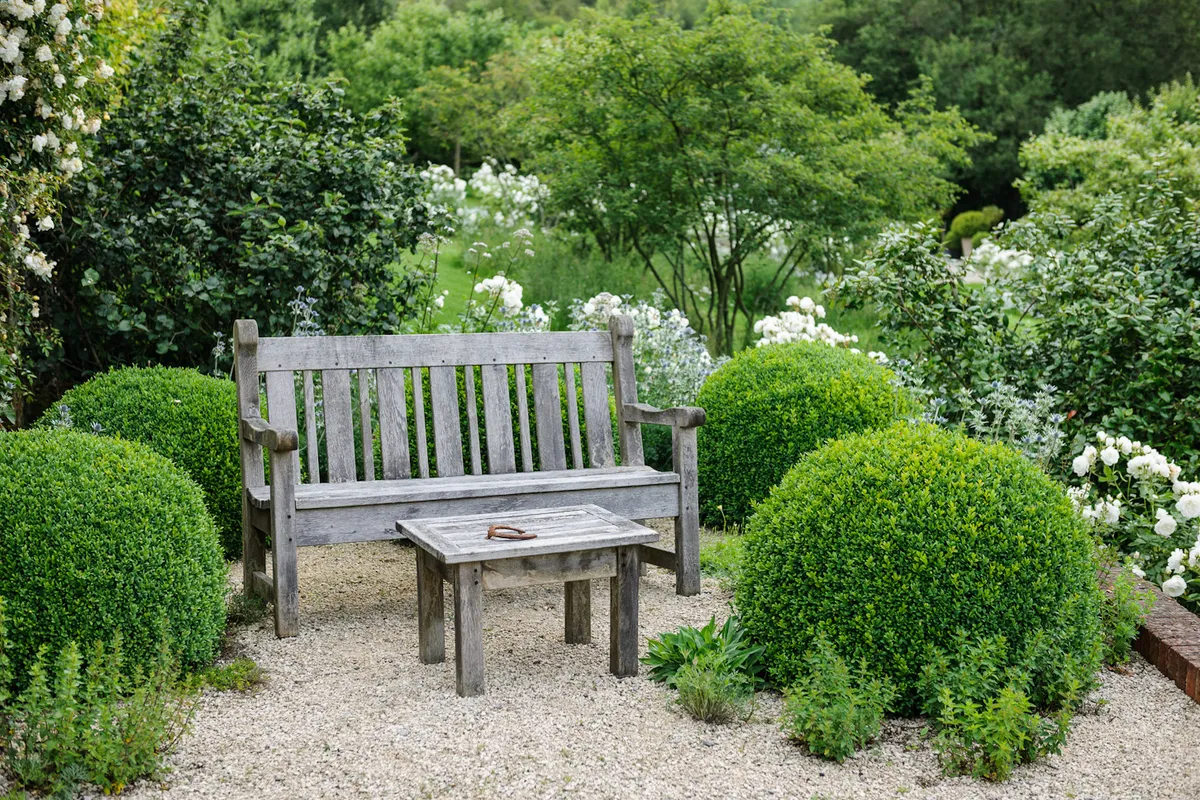
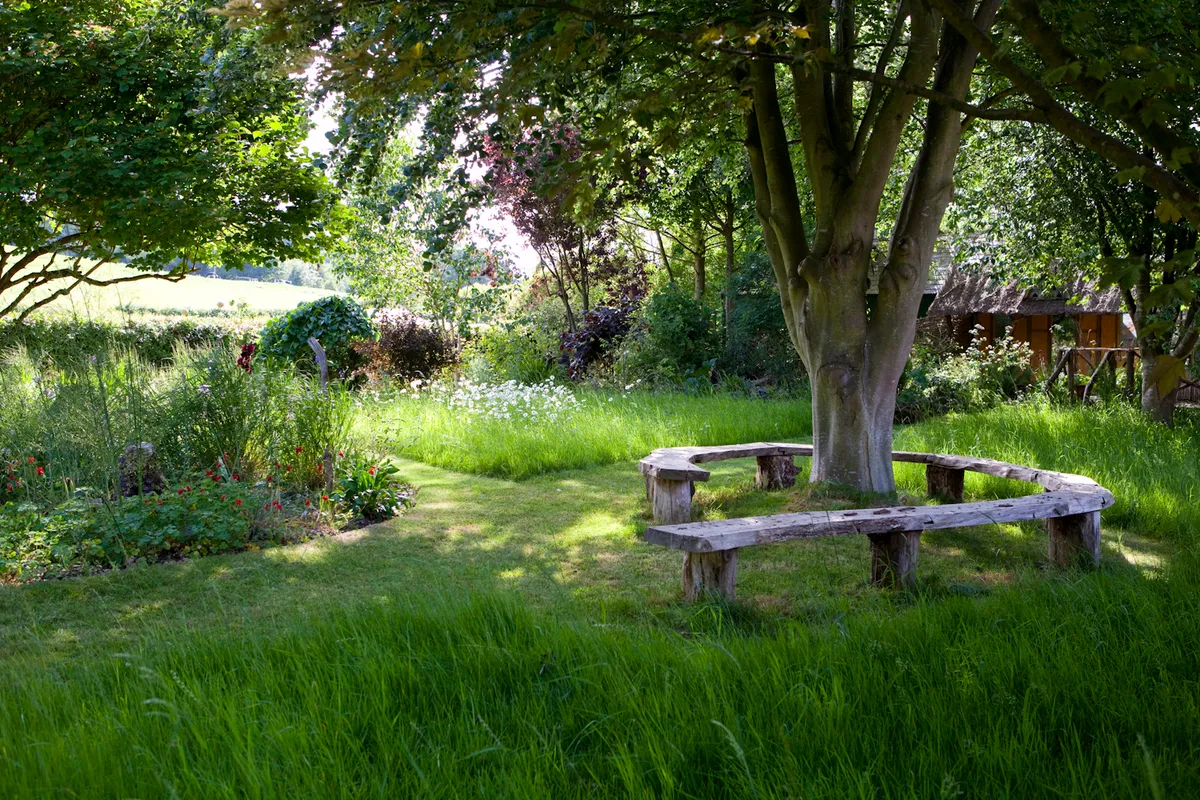
Benches work well in the garden but produce a rather static facility in which one either looks at a view or vista, or sits side by side to chat. Contemporary designers and furniture-makers have addressed this issue by producing garden benches or seats that are generous enough to lie on, providing a plinth for seating, or by curving or manipulating the basic concept of a garden bench to produce much more of a sculptural installation. Famously, the kissing seat places its two users in positions where they can talk face to face while looking in opposite directions.
Garden benches as focal points
If the garden bench or seat is to be used more as a focal point, then scale and colour, or surface finish, must be given priority. The architect and landscape designer Edwin Lutyens (1869-1944) created a series of garden benches for the various gardens on which he worked in the early 20th century. Admittedly, they are not the most comfortable of garden seats but create imposing and decorative focal points on terraces, in arbours and at the end of vistas. These models are still in production today.
Innovators
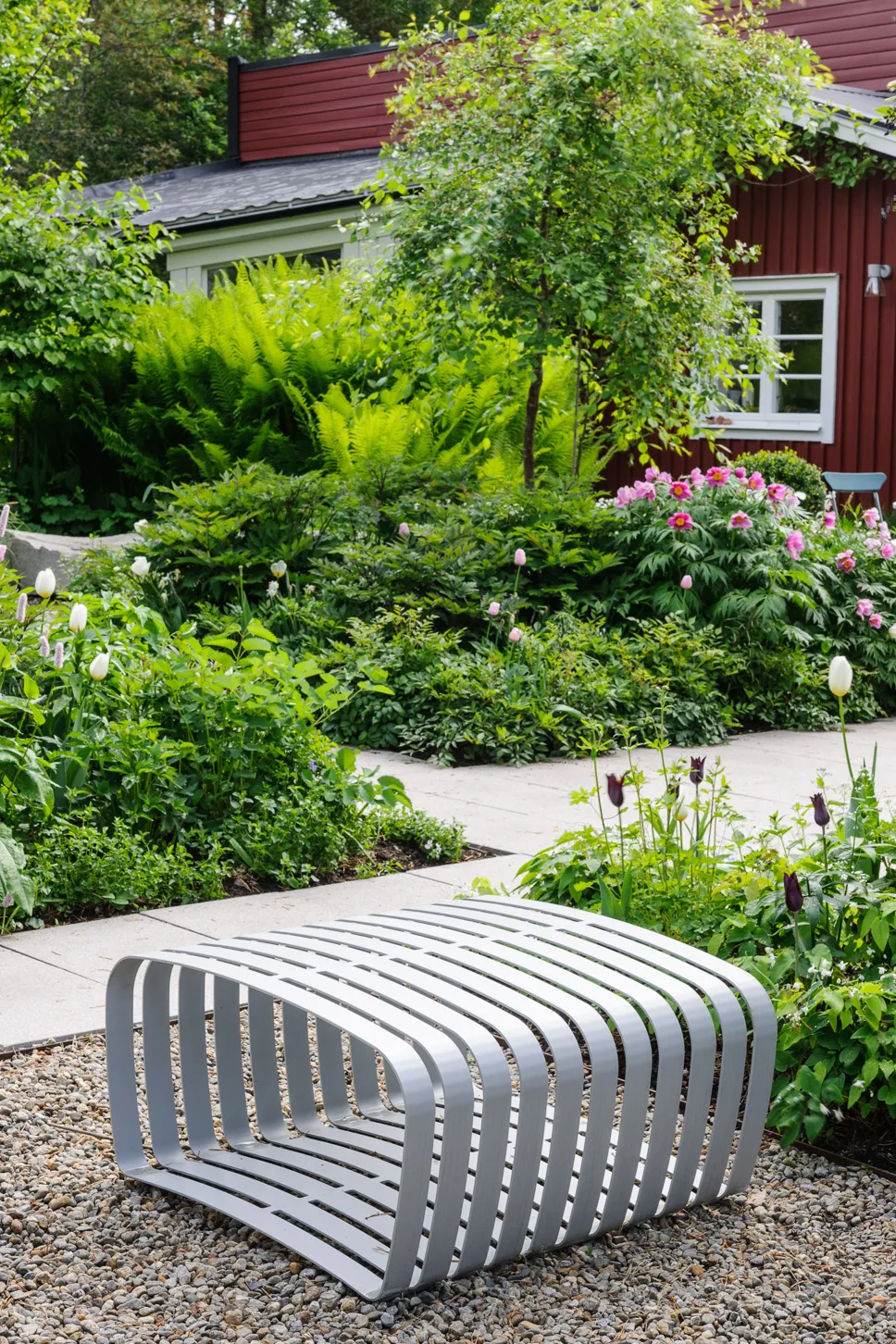
At the moment, sculptors – and product designers who enjoy the fusion of the functional and the artistic – are leading the way in garden bench and seat design. They are experimenting with new materials including resins, aluminium, stainless steel and concrete to produce sometimes one-off creations which are site-specific, perhaps integrating with existing trees.
Locations for garden benches
When siting garden benches it is best to consider laying a hard surface or gravel standing beneath the seat. This means that regular use will not wear away the lawn and, secondly, that mowing is much easier and the garden bench will not need to be moved with each mowing.
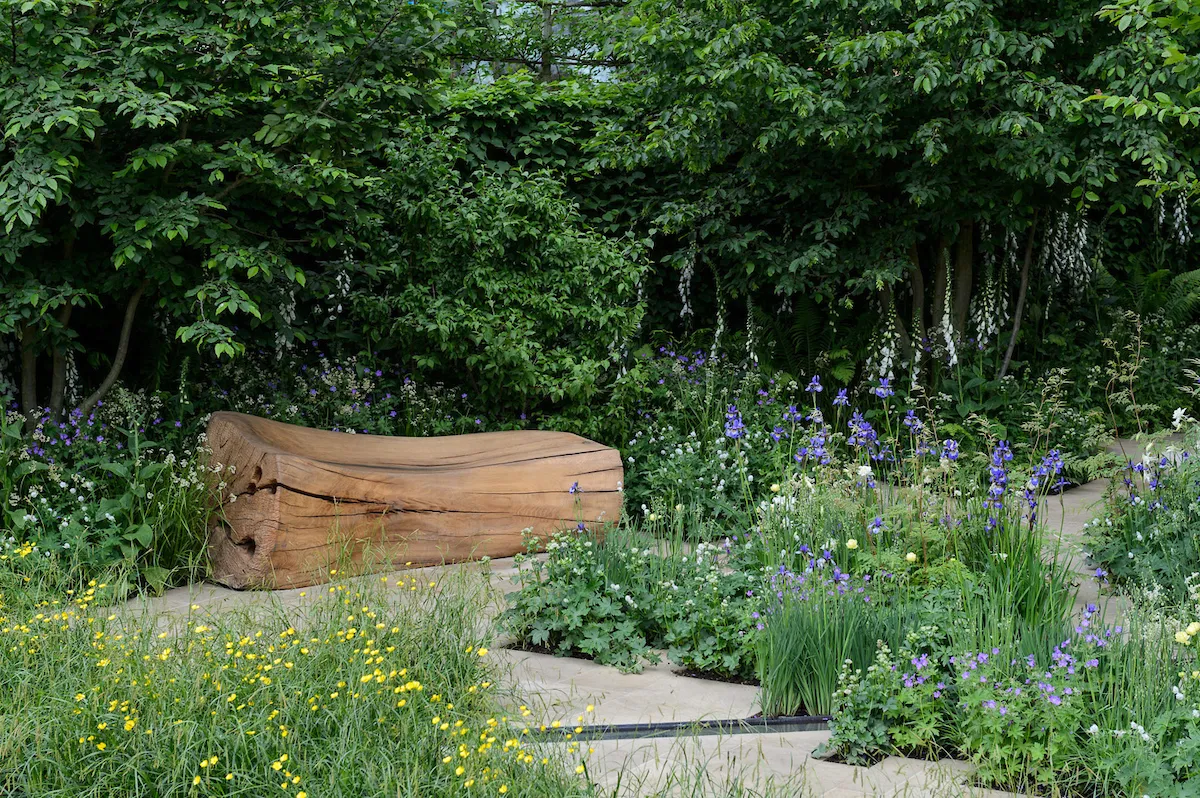
In addition, consider how a garden bench will look from elsewhere in the garden, not simply from a main vista. This is particularly relevant in gardens where there is little formalised planting structure to screen or disguise – an important consideration in larger gardens where a garden bench might represent an interesting destination in a favourite location rather than a means of emphasising a view.
Garden benches in small spaces
For smaller spaces, more decorative solutions can be used, as the detail can be admired and appreciated at close quarters. In smaller urban gardens there may be some polarisation between the antique and the modern garden bench. Wire work or decorative steel and aluminium garden bench and seat solutions can prove appealing, but often they are a triumph of style over function, producing an uncomfortable resting place. Use them as a focal point for the garden, perhaps to set a style, rather than as a regularly used seat or piece of furniture.
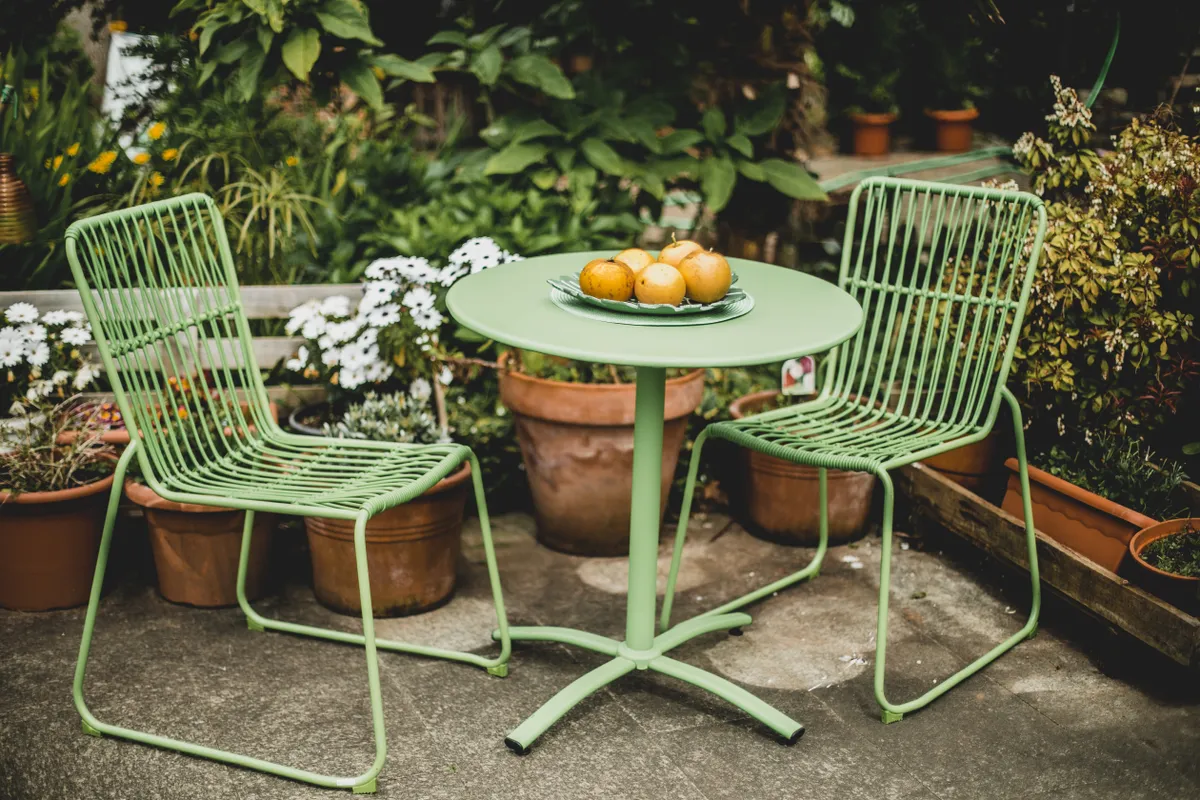
Alternatively, garden benches can be multi-functional – for example, they can double up as useful storage units in tight spaces. Or buy furniture with wheels to help take full advantage of the sun. This level of flexibility is worth considering in smaller gardens as the sun or shadow can move quickly across the space over the day. It’s one major factor against built-in garden benches and other furniture, when one is tied to the location rather than the prevailing conditions.
Elegant garden benches can be cantilevered from retaining or free standing walls to create simple and elegant solutions. They can be extended to accommodate extra people during parties or used as shelves for incidental pots or sculpture. Lighting can also be recessed under the garden bench seats, which looks both interesting and glamorous.
A coherent look
If possible, try to coordinate the furniture – for example, all garden benches throughout the garden could be in timber, or all timber furniture could be stained the same colour. This helps to create a sense of coherence.
KEY POINTS TO TAKE AWAY
- Garden seats should be around 45cm above ground level to produce a comfortable sitting height. Allow 45cm as a minimum for the seat depth if the seat includes a back support.
- Garden benches without a back support can be much wider as they tend to be used more as sitting plinths or for lounging. The height of the plinth should be the same (45cm) but the width of the seat could be almost any dimension; between 1m and 1.2m would make for a generous feature.
- Timber garden benches are weighty pieces of furniture that are often best left in place once sited. Garden benches like this should be positioned on to a paved surface as regular moving can damage the carpentry, not to mention strain your back. Aluminium or fibreglass may provide much lighter-weight alternatives.
- Cantilevered garden benches and seats rely on steel supports for their apparent lightness. The steel work needs to be contained within walls and foundations that are then obscured by surface finishes and paving.